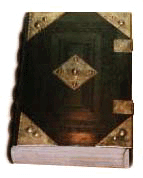
The Bible
The Old versus The New Testament



The New Testament focuses largely on how Jesus and his life and efforts fulfilled the prophecies set forth by the elders in the Old Testament. For example, in the book of Isaiah in the Old Testament, and the book of Daniel which both were understood by the Jews and many other sectors to contain a prophecy of the "Messiah."
Many claim that Jesus fulfilled those prophecies to the letter, and others claim that his fulfillment of them were perpetuated - his entrance into the city of (Nazareth?) upon an ass was claimed to have been prophecised by Isaiah. Many of the Old Testament prophets discussed a coming one who would stem from a specified lineage.
"Quotes:" ..........................
The first five books of the Old Testament are called the Book of Moses. They set forth a record of the beginning of our recent recorded history. These five books hold a cabalistic formula and their authorship is apparently by the same person - and have been the source of decoding in The Bible Code and others. There does appear to be substantial evidence of a "pesher."
Albeit the translations of The Bible Code are dubious, they were nevertheless onto something they have yet to fully uncover. The bits and pieces of fragments and phrases they have put together is undeniably coherent. The original Hebrew language and its translation has left it almost meaningless in some areas and left large holes in our understanding of its intent (as with the entire Bible).
Each Hebrew letter in each word held a full meaning. Translating Hebrew relies immensely on the numerical system, as well as alphabetical. Ancient Hebrew was largely a language based on numerical value, for which each letter and value stood for a meaning.
For example, ............................
I AM THAT I AM Ahiye Asher Ahiye The Hebrew characters for Ahiye equate to: 5, 10, 5, 1 which sum = 21 The Hebrew characters for Asher equate to: 200, 300, 1 which sum = 501 The Hebrew characters for Ahiye again equate to: 5, 10, 5, 1 which sum = 21 For a translation of the numerical value and their relationships to other or similar meanings and messages, the numerical values are taken and compared to the numerical values of another word. Words with identical numerical translations held the same thread of meaning.
Numbers each held a sacred value and a whole myriad of meaning and were usually summed to reduce the digits in a value to a base number from 1-10. There were entire philosophical doctrines based around each of the digits.
In addition, each letter of the Hebrew alphabet was based around a philosophical / religious story which related intricately back to the numerical values. Collectively, the symbols in the Hebrew language gave the translator a simultaneous left brain / right brain holistic approach to translation and could not be translated without considering a whole myriad of thought.
Many symbols take this same approach, but Hebrew did this even more systematically as a language by using specified number and alpha values. A single Hebrew image was designed to open an avenue of thought in the beholder. In their translation to English and other non-symbolic / numerical languages, their whole philosophy was lost. Thus, the Old Testament books ended up largely as basic surface tales that were largely incoherent and leaves the reader wondering why the tale was even told, except for the preservation of a certain line of history.
Source: XD888
ReREAD
COMMENTS